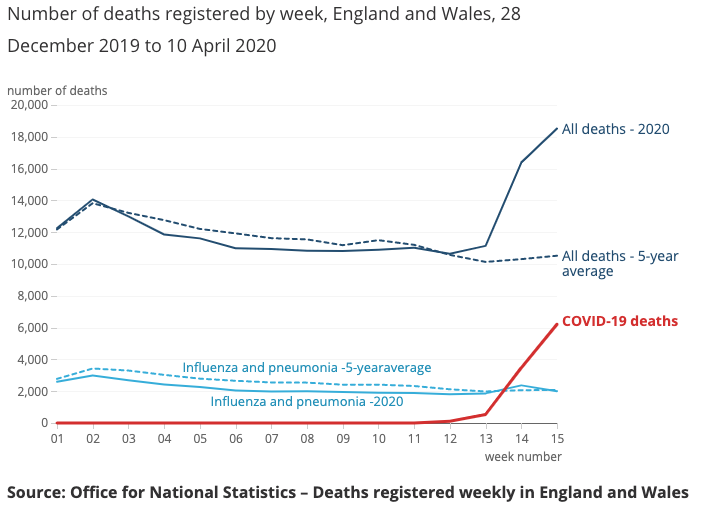Get the latest on coronavirus. Sign up to the Daily Brief for news, explainers, how-tos, opinion and more.
The number of deaths linked to coronavirus in England and Wales up to April 10 was 41% higher than previously thought, new figures reveal.
Data from the Office for National Statistics (ONS) show the total number of deaths up to April 10 stood at 13,121.
This is 3,833 more than those reported daily by Department of Health and Social Care (DHSC).
The ONS statistics include people dying outside hospitals whose death certificates mentioned Covid-19, and people where Covid-19 is a suspected factor but a patient has not been tested.
National figures released by the DHSC, on the other hand, only include patients who have died in hospital after testing positive for the condition.
The ONS figures also reveal Covid-19 was a factor in 33.6% of all deaths in England and Wales in the week leading up to April 10, up from 21% the week before.
And total deaths from all causes for week 15 of the calendar year surged in the UK to 18,516. This is 7,996 more deaths than the five-year average of 10,520 and the highest recorded figure since January 2000.

In London, more than half (53.2%) of all deaths registered in the week ending April 10 involved Covid-19. In the West Midlands this figure was 37%.
Of the deaths mentioned in the latest ONS report, 83.9% (8,673 deaths) occurred in hospital, with the remainder occurring in care homes, hospices and in the community.

